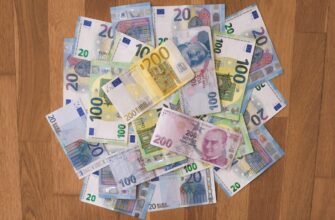- SWISX vs VTIAX: A Head-to-Head Comparison of International Stock Funds
- What Are SWISX and VTIAX?
- Schwab International Index Fund (SWISX)
- Vanguard Total International Stock Index Fund (VTIAX)
- Key Differences Between SWISX and VTIAX
- Performance Comparison
- Which Fund Should You Choose?
- Pick SWISX If You…
- Choose VTIAX If You…
- FAQ: SWISX vs VTIAX
- Final Thoughts
SWISX vs VTIAX: A Head-to-Head Comparison of International Stock Funds
Investors seeking global diversification often turn to low-cost international stock index funds like Schwab International Index Fund (SWISX) and Vanguard Total International Stock Index Fund (VTIAX). Both funds provide exposure to non-U.S. markets, but critical differences in their strategies, costs, and holdings could make one a better fit for your portfolio. Let’s break down how these two popular funds compare.
What Are SWISX and VTIAX?
Schwab International Index Fund (SWISX)
SWISX tracks the MSCI EAFE Index, which includes large- and mid-cap stocks from 21 developed markets outside the U.S. and Canada. Examples include companies from Japan, the UK, and Germany. With a low 0.06% expense ratio and no minimum investment, it’s a cost-effective option for broad developed-market exposure.
Vanguard Total International Stock Index Fund (VTIAX)
VTIAX follows the FTSE Global All Cap ex US Index, covering large-, mid-, and small-cap stocks from both developed and emerging markets (like China and India). Its 0.11% expense ratio and $3,000 minimum investment offer broader diversification, spanning over 7,000 stocks across 48 countries.
Key Differences Between SWISX and VTIAX
- Geographic Exposure: SWISX excludes emerging markets; VTIAX includes them (≈25% of holdings).
- Market Cap Coverage: SWISX omits small-cap stocks; VTIAX includes them.
- Expense Ratio: SWISX costs 0.06% vs. VTIAX’s 0.11%.
- Number of Holdings: SWISX holds 900+ stocks; VTIAX holds 7,000+.
- Minimum Investment: SWISX: $1; VTIAX: $3,000.
Performance Comparison
Over the past decade, VTIAX’s inclusion of emerging markets has led to higher volatility but similar long-term returns compared to SWISX. For example, from 2013–2023, both funds averaged ~6% annual returns. However, VTIAX underperformed during emerging market downturns (e.g., 2018, 2022), while SWISX fared better in stable developed markets.
Which Fund Should You Choose?
Pick SWISX If You…
- Want lower fees and no minimum investment
- Prefer to avoid emerging markets risk
- Seek simplicity with large/mid-cap developed-market stocks
Choose VTIAX If You…
- Prioritize diversification (small-cap + emerging markets)
- Have a long-term horizon to ride out volatility
- Can meet the $3,000 minimum
FAQ: SWISX vs VTIAX
1. Are these funds tax-efficient?
Both are moderately tax-efficient, but VTIAX’s emerging markets exposure may lead to higher non-qualified dividends.
2. Can I hold SWISX or VTIAX in a retirement account?
Yes. Both are available in IRAs and 401(k)s (if offered by your plan).
3. Do they offer ETF share classes?
VTIAX has an ETF equivalent (VXUS). SWISX does not, but Schwab offers SCHF (ETF version of SWISX).
4. Can I invest in both funds together?
Yes, but overlap (≈75% in developed markets) may reduce diversification benefits.
5. How do they compare to similar ETFs like VXUS or IXUS?
VXUS mirrors VTIAX. IXUS (iShares) is similar but has a 0.07% fee. ETFs trade intraday; mutual funds settle daily.
Final Thoughts
SWISX and VTIAX are both excellent low-cost options for international exposure. SWISX suits cost-conscious investors focused on developed markets, while VTIAX offers unparalleled diversification for those comfortable with higher risk. Assess your goals, risk tolerance, and investment size to decide which aligns best with your strategy.








